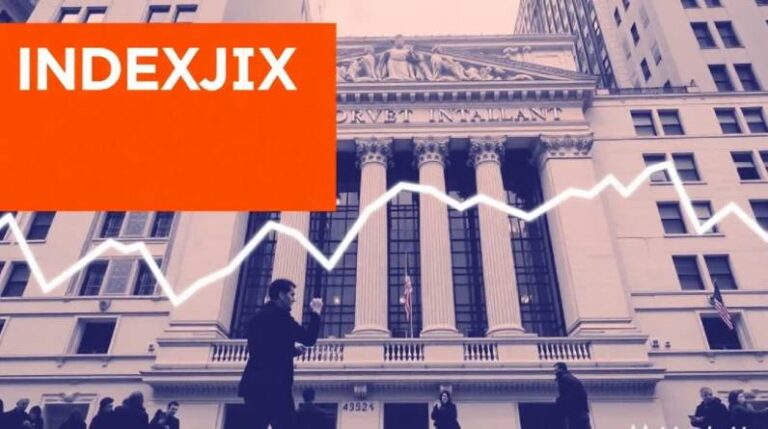Understanding INDEXDJX: .DJI – More Than Just a Market Barometer
The Dow Jones Industrial Average, often seen under its ticker symbol INDEXDJX: .DJI or simply .DJI, is more than a stock market index—it’s a reflection of American industrial and economic evolution. But in a time when technology dominates, critics argue whether this 30-stock, price-weighted relic still holds relevance.
Let’s explore a fresh perspective on how the Dow adapts in today’s economy, why it remains a key economic indicator, and how recent changes (like Nvidia replacing Intel) signal the index’s modern transformation.
What Is INDEXDJX: .DJI?
The Dow Jones Industrial Average (DJIA), launched in 1896 by Charles Dow, is a price-weighted index of 30 prominent publicly traded companies in the U.S. Despite the “industrial” in its name, today’s Dow includes tech giants, financial firms, and healthcare leaders.
Quick Facts
| Feature | Details |
| Ticker Symbol | INDEXDJX: .DJI or .DJI |
| Components | 30 U.S.-listed blue-chip companies |
| Calculation Method | Price-weighted average |
| Divisor (as of 2025) | ~0.15 |
| Management | S&P Dow Jones Indices |
| Inception Year | 1896 |
How Is the Dow Calculated?
Unlike broader indices like the S&P 500, which are market-cap weighted, the Dow uses a price-weighted formula. This means higher-priced stocks wield more influence, regardless of the company’s size.
Calculation Formula
DJIA=∑Stock Prices of 30 CompaniesDow Divisor\text{DJIA} = \frac{\sum \text{Stock Prices of 30 Companies}}{\text{Dow Divisor}}=Dow Divisor∑Stock Prices of 30 Companies
For example, if a $500 stock like UnitedHealth moves 1%, it affects the index more than a 1% move in a $50 stock like Intel.
Why INDEXDJX: .DJI Still Matters in 2025
Many investors debate whether the Dow has become outdated. But recent structural changes suggest the index is evolving to mirror today’s economic drivers—especially in AI and tech.
3 Reasons Why the Dow Remains Relevant
- Symbolic Power – The Dow is a media-friendly shorthand for “the market,” often cited in news and investor sentiment.
- Institutional Trust – With over a century of history, the Dow remains a go-to benchmark for traditional investors.
- Adaptation – The index has proven its flexibility by incorporating modern leaders like Nvidia and Amazon, replacing legacy firms.
Recent Shakeups: Nvidia Replaces Intel
In November 2024, Nvidia (NVDA), a leader in AI semiconductors, replaced Intel (INTC) on the Dow. This move marked a symbolic shift in tech dominance:
Before and After Snapshot
| Company Removed | Share Price | Replaced By | Share Price |
| Intel (INTC) | ~$21 | Nvidia (NVDA) | ~$138 |
Intel’s low price and lag in AI competitiveness made it less impactful in a price-weighted index. Nvidia, now valued at $3.3 trillion, brings AI power and higher price leverage, reshaping the index’s influence.
Dow’s Current Composition: A Sector Breakdown
The Dow’s 30 stocks span multiple sectors, aiming to reflect the breadth of the U.S. economy, not just its size.
Sector Distribution (Sample Breakdown)
| Sector | Example Companies |
| Technology | Apple, Microsoft, Salesforce |
| Healthcare | UnitedHealth, Johnson & Johnson, Merck |
| Financials | JPMorgan Chase, Goldman Sachs |
| Consumer Goods | Procter & Gamble, Coca-Cola |
| Industrials | 3M, Caterpillar, Boeing |
| Energy | Chevron |
Advantages of the Dow in a Tech-Centric Economy
Despite criticisms, INDEXDJX: .DJI retains several strengths:
Pros
- Real-time gauge of investor sentiment
- Long historical track record (125+ years)
- Focus on market leaders, not just size
- Lower turnover rate = long-term stability
Cons
- Price-weighting can distort influence
- Excludes dividends in index value
- Only 30 companies 500+ in other indices
- S.-centric, doesn’t reflect global trends
Comparing the Dow to Other Major Indices
| Index | Components | Weighting Method | Focus |
| Dow Jones | 30 | Price-weighted | U.S. Large-Cap |
| S&P 500 | 500 | Market-cap | U.S. Broad Market |
| NASDAQ | 3,000+ | Market-cap | Tech-heavy |
| FTSE 100 | 100 | Market-cap | U.K. Market |
How to Track INDEXDJX: .DJI Live
Real-time monitoring of the Dow is vital for active traders and analysts.
Tracking Tools
- TradingView – Free charts with custom indicators
- Yahoo Finance – News + delayed price charts
- Bloomberg Terminal – Real-time professional analytics
- NYSE Website – Official index page (15-minute delay)
How to Invest in the Dow
While you can’t invest directly in the index, there are multiple financial instruments tied to it:
Investment Options
- ETFs: e.g., SPDR Dow Jones Industrial Average ETF (DIA)
- Index Funds: Offered by Vanguard, Fidelity, etc.
- Futures Contracts: For institutional or active traders
- Options Trading: Based on Dow ETFs or futures
Fresh Perspective: Is the Dow the Best Reflection of Today’s Economy?
In a world dominated by AI, fintech, and decentralized innovation, some argue the S&P 500 or even newer ESG and tech indices better reflect economic shifts. However, the Dow’s resistance to high turnover may actually be an advantage—providing consistency amid volatility.
By including companies like Nvidia and Amazon, the Dow sends a clear message: adapt or get replaced.
Key Takeaways
- INDEXDJX: .DJI is a price-weighted index of 30 U.S. blue-chip stocks.
- Nvidia’s addition reflects the rising dominance of AI in the economy.
- The Dow adapts slowly, but each change is deeply symbolic and data-driven.
- Still relevant in 2025 for long-term benchmarking, investor sentiment, and historical analysis.
- Best viewed alongside other indices for a comprehensive investment strategy.
Frequently Asked Questions
What does INDEXDJX: .DJI mean?
It’s the ticker symbol for the Dow Jones Industrial Average across major platforms.
Why only 30 companies?
The index is designed for simplicity and focus, representing the most established leaders across industries.
How often does the Dow change?
Changes are ad hoc, not scheduled—usually driven by mergers, performance, or sector relevance.
Is the Dow a good investment?
While you can’t invest directly, ETFs like DIA allow exposure. It’s a solid long-term benchmark but best used with broader indices.
Does the Dow reflect tech and AI growth?
With recent additions like Nvidia and Amazon, it increasingly does.
For more insightful articles and the latest updates, keep visiting Hacoo.

